Welcome to the Zero Zone
If you’re looking for adult alternatives to soft drinks, juice or sparkling water. If you always thought zero alcohol beer tasted like malty water. If you believe zero alcohol wine was just grape juice by another name or that zero percent cider was nothing more than hyped-up apple juice. Or if you wanted an alcohol-free cocktail that treated you like a grown up. Then you’re in the right place.
Michael Donaldson, journalist, author and beer writer, Chair of Judges for the New World Beer & Cider Awards explores the new and exciting world of zero alcohol wine, beer and spirits.
Contents:

What is Zero ABV anyway?
By law in New Zealand, low alcohol means less than 1.15% ABV.
That might sound like a lot but the crazy thing in life is that lots of things contain alcohol without us knowing … including, right now, you!
Curious Alcohol Fact: The human body produces alcohol, 24/7. That’s right. The food you eat has sugar in it and through the process of digestion some of that sugar is turned into ethanol. It’s only a small amount, around 3-4g per day or the equivalent of ¼ of a standard drink.
Ripe fruit can produce alcohol. A very ripe banana, for instance, can be about 0.4% alcohol by volume.
Vanilla Extract is a classic “I bet you didn’t know that” product. It contains at least 35 per cent alcohol (in America, by law it must contain that amount at a minimum!). It’s just when you use vanilla extract, it’s usually in baking and the alcohol burns off … but if you’re sweetening your cream with vanilla, it’s going to have some alcohol in it, though admittedly very little.
Kombucha is another one. This on-trend drink is a fermented product. When these are sold as soft drinks, by law they have to be under that 1.15 percent ABV – which if you drink a 330ml means you’ll consume a third of a standard drink.
Breath freshener strips are another source of small amounts of alcohol.
Alcohol is part of life – whether we like it or not. But increasingly we’re all becoming aware that a little less alcohol in our personal lives is a good thing.
A few years ago, to make these kinds of choices – well, we didn’t have that many choices. If you were the designated driver it could mean a long and slightly lonely night drinking water or an overly sugared juice or soft drink.
And when the zero per cent products came on the market, it’s fair to say some of them tasted less than amazing.
The good news is that changing consumer trends and technology are moving in step – as demand for zero alcohol products increases so does the creativity of manufacturers.
In terms of choice it’s a great time to be alive. We’ll look at some of the huge range of products you can enjoy with zero fear but first come over the laboratory, we have a science lesson.
Check out our range of non-alcoholic beverages in the Zero Zone in store and online.
Easy and delicious non-alcoholic cocktails

How do they do it?
We won’t get too techy here, promise, but the past decade has seen huge advances in the science for reducing alcohol in beverages.
The Spinning Cone Column (SCC) is an Australian invention originally created to remove sulphur from wine. But like all good technologies, people soon found better and more widespread uses for it, like taking alcohol out of wine and cider.
SCC takes place in a vacuum which allows low temperature distillation in two stages. First the full alcohol wine is poured into the column and the spinning motion creates a thin film of liquid. At around 30°C the system captures the delicate aromatics of the wine and stores them. The liquid is passed through for a second time and alcohol is removed at a slightly higher temperature. The two captured batches of liquid are blended back together and voila, a zero alcohol beverage.
Research shows that not only does the technology retain flavour but in some cases enhances it, because it is no longer diluted by ethanol. In red wine for example, the Spinning Cone Column increases the concentration of resveratrol – the antioxidant found in grape skins.
Interesting techie fact: California wine-makers first used SCC technology to reduce the alcohol in their famed Zinfandel wines. In perfect weather these grapes produce lots of sugar, leading to super-high ABV and the vintners felt it disrupted the balance of the wine so they used SCC to take away around 2 percent of alcohol and bring the wine back into balance.
As an aside, those fastidious Europeans were less fond of this new technology and reduced alcohol wines made by this method were banned in the European Union for a number of years. Many critics will argue that wine without alcohol is not actually wine but the French go further and say wine has to be 8 percent ABV. Luckily, we’re all a little more free-thinking in this part of the world.
The beauty of the Spinning Cone Column is that the wine only reaches temperatures around 35-45°C and only for around 25 seconds so it’s not effected by the heat
Spinning cone columns are also used in making coffee and flavour essences.
Non-alcoholic beer
How do they make non-alcoholic beer?
Method 1: Removing alcohol from the beer
Beer traditionally uses two common alcohol removal methods: vacuum distillation or reverse osmosis. In more basic terms: this means heating or filtering to remove alcohol and both methods affect the flavour.
Vacuum distillation
During vacuum distillation, beer is heated so the alcohol evaporates out. The vacuum means the beer has to be warmed to around 33°C instead of 80°C which helps preserve aromatics and flavour. But still, warm beer? It does result in an inferior taste.
Reverse osmosis
Reverse osmosis operates like a kidney dialysis machine: beer is pushed through a filter with microscopic pores where alcohol molecules and water are separated.
Method 2: reducing the amount of alcohol to start with
A method for reducing the amount of alcohol to start with is arrested fermentation which is where brewers halt the fermentation process before too much alcohol can form. This is usually done by rapidly cooling down the beer to make the yeast go to sleep. This process allows some yeast-derived flavours to develop, and stops the beer tasting too much like “wort” (pronounced wert) the name we give to unfermented beer. Critics will often describe non-alcohol beers as tasting “worty” which means it’s more like a malty drink than beer.
One of the reasons the world has been slow to make really good zero alcohol beer is because these technologies are either quite expensive, so remain the domain of the big global brands, or just very difficult to get right.
Historically to remove the alcohol without altering the taste is incredibly hard. Even a low heat can strip away flavour in the distillation model. Ditto super-filtration. And the arrested fermentation method means the beer doesn’t get to develop full flavours in the first place.
The one thing that drove big breweries to work harder in this area, was the rise of craft beer and its focus on flavour. The creativity and innovation of craft brewers has created a composite method of reducing alcohol.
How to make non alcoholic beer taste better
Most craft breweries prefer a “brew natural” method of creating non-alcohol beers. First they will choose grains that are slightly harder to ferment. These include speciality malts that contain long-chain sugars that are hard for yeast to break down. This helps creates a “beer” flavour and leaves residual sugar for mouthfeel and flavour. They will then choose a “low-attenuating” yeast — one that naturally ferments at a lower rate. Controlling the temperature at which things happen is another way to create flavour but reduce alcohol. Finally, hop selection and the methods for using hops can allow a brewery to create a lot of flavour without too much bitterness, plus hop oils can add weight to the body of the beer to help create the perception you are not just drinking flavoured water.
The brew natural method involves tweaks to around a dozen variables but done well it results in a great tasting beer.
What’s a good zero percent beer to try?
Picking a great alcohol-free option is both easier and harder these days. Easier because there are so many good options which means any fears of picking up a dud are greatly reduced. But it’s also harder because … there are so many good options!
Every year, the New World Beer & Cider Awards finds the best beers and ciders in the country. This year there were five non-alcoholic beers & ciders in the elite Top 100 and they’re as good a place as any to start your journey, with options ranging from a more mainstream lager offering right through to a super-hoppy craft-style non-alcoholic beer.
Related: See the Top 30 Beers & Ciders of 2024

8 Wired Lo-Fi Raspberry Sour Ale
Type of beer: Low Carb Beer
Brewery: 8 Wired Brewing
Flavours: Tart, refreshing raspberry
Judges’ comments: Low carb combined with low ABV (2.5%) and big flavour is a win-win for drinkers who want a great-tasting beer that won’t over-tax your body. This brew is based on the German-style Berliner Weisse, which is often served with a dash of raspberry syrup for sweetness. The execution here is top-notch with a robust raspberry aroma and a hint of lemon. It looks great in the glass too, with the judges praising the “very pretty slight pink blush.”
Pairing Recommendation: Bright fruity effervescence goes well with blue cheese.
For more on this beer visit: https://8wired.co.nz
Buy this beer: Visit online shopping

Emerson's Super Quench Lower Carb Pacific Pilsner
Type of beer: Low Carb Beer
Brewery: Emerson's Brewery
Flavours: Low carb, high flavour
Judges’ comments: Low carb beers are all the rage right now as drinkers seek “better for you” options, and this one from Emerson’s is doubly good: bringing that rare combination of low carb and high flavour. This is a beer you’d be happy to drink whether you wanted a lower carb option or not. At just 4 per cent ABV it tastes as good as any 5% pilsner. There’s a lovely hop character as well, but nothing overpowering — just perfectly in balance, offering exactly what the name suggests: a super-tasting beer that’s incredibly thirst-quenching. The judges appreciated the big flavour and the texture: “Full-flavoured palate, good weight on the malt, nice level of fruity hops. Nice pilsner.”
Pairing Recommendation: Light and bright beer wants light and bright Japanese tempura veges.
For more on this beer visit: www.emersons.co.nz
Buy this beer: Visit online shopping

Bach Brewing ALL DAY ORIGINAL Non-alc IPA
Type of beer: Low alcohol and non-alcoholic beer
Brewery: Bach Brewing
Flavours: Non-alc almost like the real thing
Judges’ comments: One of the original non-alcoholic craft beers in Aotearoa, and — according to our judges — still one of the best. It’s so beer-like you might be confused as to whether it’s genuinely a non-alc. With less than 0.5% alcohol as a base for building layers of flavour, it’s hard for zeroes to stay interesting and in balance but this beer achieves that flawlessly. The judges lauded the brew team: “Impressive to squeeze this much hop character into a non-alc beer”. They noted “strong aromas of mango and lychee jump out of the glass, with a dank green capsicum edge”. Those hops present on the palate as “juicy citrus, with some herbaceousness and a restrained bitterness and clean, crisp finish.”
Pairing Recommendation: Perfect lunch combo with a bacon, avocado, lettuce, tomato sandwich.
For more on this beer visit: https://bachbrewing.co.nz
Buy this beer: Visit online shopping

Epic Super Zero IPA
Type of beer: Low alcohol and non-alcoholic beer
Brewery: Steam Brewing/ HANCOCKS
Flavours: Bright lemon note, clean
Judges’ comments: Epic are legends when it comes to hoppy beers and you’d expect no different when it comes to a non-alcoholic version with Super Zero. At less than 0.5%, it presents a delightfully intense hop aroma of fresh lemon rind. The judges were rapt with how “clean” this beer is: both in aroma and flavour. “Good clarity, soft bitterness, pillowy sweetness, perfumey and sherbet-like hop flavour,” they wrote. We’re in a golden age of non-alcoholic beers in Aotearoa and this is a shining example.
Pairing Recommendation: The light lemon drop hop is tailormade for sushi and sashimi.
For more on this beer visit: https://epicbeer.com/
Buy this beer: Visit online shopping
Non-alcoholic cider
Zero alcohol cider
Cider is a great zero alcohol option and before you come up with the clever clogs assertion that it's "just apple juice", think again.
Cider works as a zero option because its typically lighter bodied to start with, and even with the removal of alcohol it maintains a bright acidity and distinctive flavour.
Why put alcohol in just to take it out?
Fermentation is an amazing thing, it not only converts sugars into alcohol but adds an array of flavours and compounds that enhance the experience. So producing an alcoholic beverage first and then removing the alcohol creates an entirely different product than just, for example, crushing grapes or apples into juice.

Zeffer 0% Alcohol Passionfruit Cider
Type of beer: Low alcohol and non-alcoholic cider and mead
Brewery: Zeffer
Flavours: Lively passionfruit, huge flavour for a 0
Judges’ comments: Back for a second year in a row in the Top 30 means this is a product you can trust. Frankly, our judges think this is one of the best zero alcohol beverages in the country. It’s sweet, lush, sherbety, a little tart and refreshing. The popping passionfruit aroma is underscored by fresh apple cider with surprising heft to the mouthfeel. “Fresh and crisp mouthfeel, with a good level of acidity,” the judges wrote. “Apple cider is present and passionfruit flavour carries well throughout. Very strong passionfruit nose, lean body, strong acidity but not overpowering, excellent flavour that lingers — bright and fun.”
Pairing Recommendation: The ideal lunch quaffer with a quiche or caesar salad.
For more on this beer visit: https://zeffer.co.nz/
Buy this beer: Visit online shopping
Related article: Get to know the different types of beer
Non-alcoholic wine
What about a wine that won’t make me whine?
Taking 5 percent alcohol out of beer is one thing – and a judicious use of grains such as oats and wheat, yeast character as well as hop notes can go a long way to covering the missing alcohol in beer.
But there are fewer places to hide with non-alcoholic wine. You’re taking out 12 or 13 percent alcohol, which is quite a lot of the wine’s character, and you can’t go filling it up with other “adjuncts” as you can with beer.
Related articles:
- Top 50 best New Zealand wines for under $25
- Best New Zealand Sauvignon Blancs of 2020
- Best New Zealand red wines of 2020
Giesen 0%
Perhaps that’s why wine has taken longer to get zero percenters to market – it’s very hard.
The first to market in New Zealand was a 0 per cent Sauvignon Blanc from Giesen. The wine was driven by the same factors at play in the lives of many Kiwis – winemaker Nikolai St George was trying to cut back his consumption as he got ready for a fitness challenge.
Related article: Popular wine varietals and grape varieties
"For the likes of someone like me, I still need to have something in my hand and not feel like I'm missing out," he said. "So that sort of started the process, and then 12 months later we were able to make a zero per cent wine. A lot of that was because new technology had been brought into New Zealand about six months ago."
New Zealand wine critic and Master of Wine Bob Campbell blind taste-tested the wine against two other no-alcohol Sauvignon Blanc wines and declared it “a giant leap forward for 0% alcohol Sauvignon Blanc.” He noted flavours of passionfruit and red capsicum, a pleasing sweet/sour tension, and the dryness typically associated with Marlborough Sauvignon Blanc.
“...a giant leap forward for 0% alcohol Sauvignon Blanc.”
Bob Campbell
Not only is the wine light, fresh, and crisp, with a dry finish suited to this distinctive New Zealand varietal, but it’s also low in calories. At 10.6 calories per 125ml serve, a glass of Giesen 0% has 85% less calories per serve than a traditional 12.5% ABV Sauvignon Blanc.
The wine was produced from using the Spinning Cone Column technology and Duncan Shouler, Giesen Group Chief Winemaker, said it was an instant success. “There were plenty of people who couldn’t imagine a niche for this wine,” he says. “But for every person asking why, we had another person who shared their story - people who had health issues and couldn’t drink but still wanted to feel included was a huge part of this.
“Over the last year or so we’ve seen a huge shift in stigma as alcohol removed options become more socially acceptable.”
Edenvale
It was a similar story Edenvale Beverages, where they noticed that more and more people were conscious about their health and wellness with the Aussie winemaker now having 15 varieties of zero percent wines. But that had to marry with sophistication and flavour.
“People are living busier, more active lives and while one of the reasons for choosing non-alcoholic beverages includes not wanting a hangover to keep them from making the most out of their days, they also want an option that is better for them,” Edenvale said.
McGuigan
McGuigan is another Aussie giant with a range of zero ABVs and their offering, says marketing director Scott Burton, is about offering choice for people who want to moderate their alcohol intake. “It’s about consumer choice – we are focused on putting the consumer at the heart of our business – so the move into the zero alcohol category was a natural fit for the McGuigan brand. We see zero alcohol as an important consumer offering as the behaviour continues to change and evolve.”
Non-alcoholic wine recommendations from the judges
The New World Wine Awards judges tasted and evaluated a wide range of non-alcoholic wines under 0.5% ABV that were entered into the competition and recommended the following.
The judging team were impressed by both the increased selection and the quality. As was the case last year, the sparkling, whites and Rosés continue to impress, but the most conversation and comment was around the improvement in the quality and drinkability in the red wines. The reds really impressed the team with the recommended wines showing the same characteristics as their full-alcohol counterparts, yet at 0.5% ABV or below. This uplift in quality means that if choosing to abstain, whether on a single occasion or as a lifestyle choice, consumers have a more varied choice of great quality non-alcoholic wines available to them.
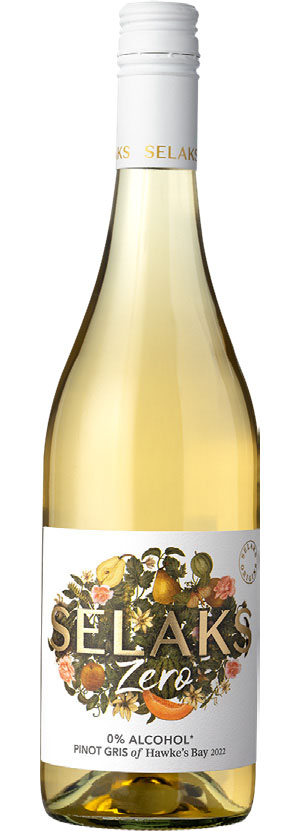
Selaks Origins Pinot Gris 0% 2022Refreshing and easy drinking, Gris lovers rejoice. |
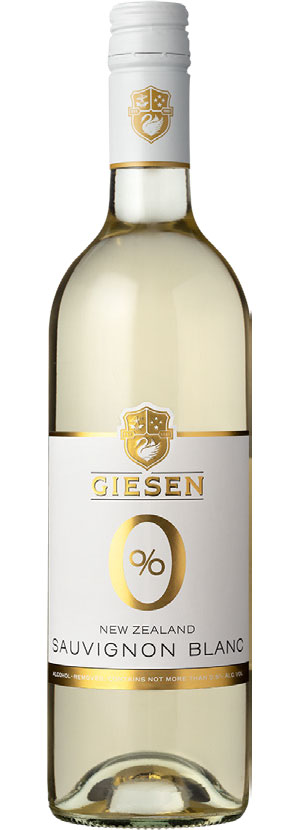
Giesen 0% Sauvignon BlancAll that is wonderful about Marlborough Sauvignon Blanc without the alcohol. |

Giesen 0% RieslingA zingy, refreshing flavourful palate with well balanced sweetness. |
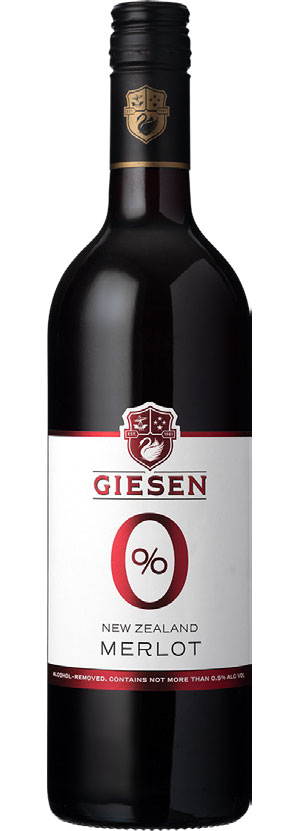
Giesen 0% MerlotRounded and fruit forward with dark fruits and spice. |
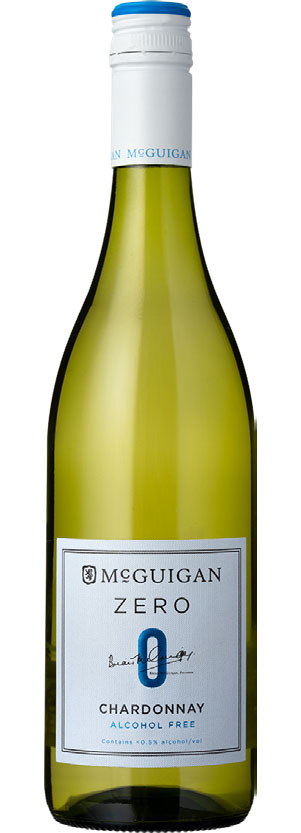
McGuigan ZERO ChardonnayRipe stone fruit aromas and flavours with sweet vanilla. |
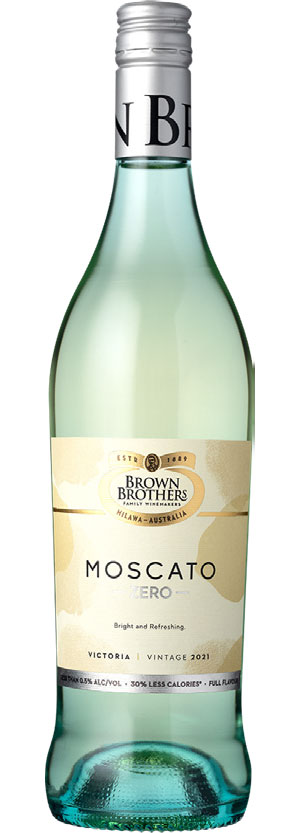
Brown Brothers Moscato Zero 2021Bright citrus with green apple and elderflower aromas and flavours. |
Non-alcoholic spirits and cocktails
But wait, there’s more choice than ever
The idea of treating non-alcohol drinkers as real people with discerning palates is evident in the new range of zero alcohol spirits, cocktails, or RTD-type products from brands such as Seedlip, AF and Finery.
If you thought taking alcohol out of wine was hard, trying taking it out of a spirit!
Seedlip
British company Seedlip is an industry leader in this area and because they use a range of botanicals in their drinks it takes up to 36 distillations to get the capture and concentrate all those great flavours. That equates to 36 distillations before the distillates are blended, filtered and bottled.
Lyre’s
Australian company Lyre’s is – first of all – a great name. It’s taken from the Australian Lyrebird, described as the world’s greatest mimic. In keeping with that, Lyre’s non-alcoholic spirits mimic the taste and appearance you'll find in your favourite alcoholic classics.
Finery
There are now some great New Zealand companies delivering in this area as well.
Finery, founded by Jane Allan, started with a range of canned vodka soda cocktails, with flavours such as vanilla and elderberry; grapefruit, cucumber and mint; green tea, honey and mint; and lemon myrtle, lime and black tea.
While these are lower alcohol options at 5 per cent, Allan really wanted to lead the Kiwi charge on zero alcohol options. It took a while to figure out how to do it without using artificial flavours and added sugar but she now has the same range of flavours that are “zero everything” – no alcohol, no sugar, no preservatives and no gluten.
The trickiest part with a non-alcohol version was finding a way to replace the warmth of alcohol. After some trial and error that came via a capsicum extract that brings a delicate heat.
Allan says the heat brings a “placebo” effect and the feeling you’re really drinking alcohol.
“You’re drinking a product that looks the same, feels the same, and gives you slight heat at the back of your throat. We needed to think outside the box to make something a bit special without crossing over into artificial flavours.”
With her young sons in mind, Allan is driven by changing the drinking behaviour of Kiwis.
“I would like to consider Finery as being responsible for helping re-shape our nation’s approach to drinking. We want to be a voice for that zero per cent movement. The over-arching thing is that New Zealand needs it, we need to learn to drink in moderation. We want to be at forefront of that.”
She believes that movement is well under way in Aotearoa, with an increasing number of young people deciding against drinking alcohol.
Why put alcohol in to start with?
That was the question that bugged Lisa King.
The woman behind the charity Eat My Lunch, loved to drink gin & tonic but when she decided to give up alcohol she was desperate to find something that tasted the same but without alcohol.
King stopped drinking at the start of 2020 and like so many others couldn’t find “anything good” to replace her fave G&T.
The non-alcohol market, she said, was “so poorly catered for”.
“At events if you’re drinking water, juice or a soft drink – you can’t hide from yourself that you’re having a kid’s drink.”
She wanted a drink she’d be “confident and happy to hold – that allows you to be part of that social occasion and not feel left out.”
AF
From there AF was born.
AF – which you might think means one thing – actually stands for Alcohol Free.
The unique quality of AF is that it’s made without alcohol from the get-go but yet it gives you the feeling of drinking alcohol.
As King notes, she couldn’t see the point of putting something in just to take it out later. So she figured there must be a way with modern flavour technology to replicate the alcohol vibe.
“It didn’t make sense to put something in there that you didn’t want.”
She’d worked with food companies in the past and was familiar with the world of flavours and felt sure she could create something that tasted like gin and tonic.
The trick was to recreate the depth and warmth that alcohol brings without bunging the drink full of sugar, which fattens the mouthfeel and the waistline.
They have created a bespoke, trade-marked heat extract called Afterglow.
“You can literally feel it rising up your face,” King says. “It gives you the sensation of having an alcoholic drink rather than flavoured sparkling water.”
AF started with a classic G&T and now has a cucumber G&T, pink grapefruit G&T, Cuba Libre and Dark & Stormy.
With some sharp branding, King says AF is about making not-drinking “normal, fun, sexy, aspirational”.
She says Kiwis “don’t need alcohol to have fun – it’s so ingrained in our culture”.
One of her other drivers is not to focus on tee-totallers but encourage people to moderate their drinking without giving it up altogether.
“I didn’t want to talk to people who’d already decided to stop drinking. I want to talk to people who chose not to drink every other day.”
Good Cocktail Co
Good Cocktail Co has a range of alcohol free classic cocktail mixers including Cosmo, Mojito, Margarita and Daiquiri, which are all made using natural ingredients including botanical extracts & real fruit juice.
Luxurious non-alcoholic cocktails

What else is there for me to try?
Maybe the idea of non-alcoholic beer, wine or cocktails is just not you but still, you want something more than fizzy water or juice.
There are plenty of choices in this expanding market including the good-for-your-gut “living” fermented drinks such as kombucha and kefir which are low on sugar but full of probiotics.
Both of these drinks are fermented products made with Scoby which stands for “symbiotic culture of bacteria and yeast”. The fact these are fermented drinks makes them dry and refreshing and brings a complexity of flavour.
Redeem
Redeem, from Hawke’s Bay, has makes three kefir sodas: raspberry hibiscus, ginger and mandarin yuzu. They are all low sugar and full of probiotics.
Alchemy & Tonic
Alchemy & Tonic is a range of flavour-packed mixers in good-looking cans that can easily be consumed as a stand-alone drink rather than mixing it with a spirit.
Where do I find this stuff?
Throughout New World stores you’ll start to find Zero Zone’s popping up with zero alcohol products grouped together.
Under New Zealand law, supermarkets have to operate what’s known as a Single Alcohol Area where all the alcohol products are displayed. But stores can choose to display beer, wine and mead marketed as “Zero” and containing less 0.5% ABV or less either inside or outside of the Single Alcohol Area.
However other products such as the alcohol-free spirits and premixed cocktails such as AF, Finery, Seedlip, Ecology, Lyres and others cannot be displayed in the Single Alcohol Area, as they’re not subject to the Sale and Supply of Alcohol Act 2012.
Confused? Look for the Zero Zone signage and products highlighted as ‘Low Alcohol’ on our shelves. You can also shop online for our Zero Zone low alcohol drinks.











